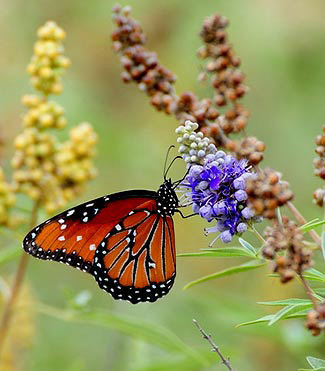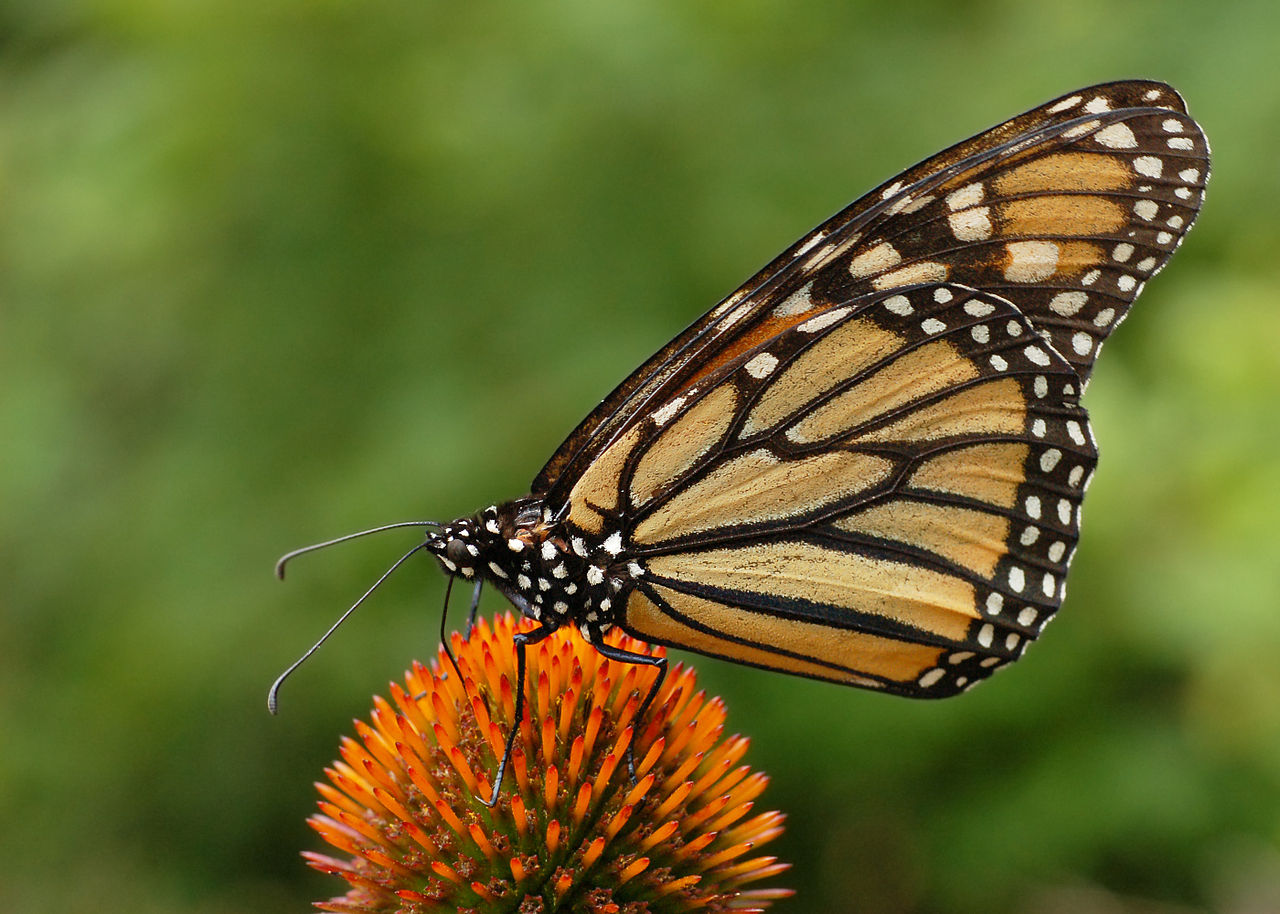According to the weekly news (ending 28 September, 2013) from Earthweek: A Diary of the Planet (featured on our web site), migrating Monarch butterflies are disappearing at an alarming rate: “Clusters of colorful monarch butterflies are now in the midst of their marathon migration southward across a broad swath of North America, but observers warn their numbers have plummeted again this year.
The organization Journey North helps students and other citizens plot the paths of various migrating species. It says this year’s reports indicate that the decline in monarch numbers over the past 10 to 15 years appears to have been much steeper this summer. Biologist Jeremy Kerr told the Ottawa Citizen that he thinks numbers are now down by as much as 90 percent.
Loss of habitat and pesticide use due to expanding agriculture is mainly to blame, according to experts. Last summer’s extreme drought in the U.S. Corn Belt wiped out huge numbers of milkweeds, which the monarchs need to breed and feed. Elizabeth Howard of Journey North says that was a fatal blow to many of the iconic fliers.
Monarchs typically live only four to five weeks, except for the generation that emerges in late summer. That’s the one that migrates the entire way southward to the species’ wintering grounds in the Mexican state of Michoacan. The small number of southward migrants this autumn has caused even more concerns over the long-term future of the world’s longest-migrating butterflies” (source).
Ironically, the photograph of a Monarch butterfly used to illustrate this news item is actually a photograph of a different species. However, this identity error leads to interesting facts about insect mimicry.
“Monarchs are foul-tasting and poisonous due to the presence of cardenolide aglycones in their bodies, which the caterpillars ingest as they feed on milkweed. By ingesting a large amount of plants in the genus Asclepias, primarily milkweed, monarch caterpillars are able to sequester cardiac glycosides, or more specifically cardenolides, which are steroids that act in heart-arresting ways similar to digitalis… Monarchs share the defense of noxious taste with the similar-appearing Viceroy butterfly in what is perhaps one of the most well-known examples of mimicry. Though long purported to be an example of Batesian mimicry, the viceroy is actually reportedly more unpalatable than the monarch, making this a case of Müllerian mimicry.
In Batesian mimicry, the mimic shares signals similar to the model, but does not have the attribute that makes it unprofitable to predators, e.g., unpalatability. In other words, a Batesian mimic is a sheep in wolf’s clothing. Müllerian mimicry describes a situation where two or more species have very similar warning or aposematic signals and both share genuine anti-predation attributes, e.g., being unpalatable (Wikipedia: Mimicry).
To complicate the issue, the closely related Queen and Soldier butterflies also resemble the Monarch, feed on milkweed, and exemplify Müllerian mimicry. However, the Monarch is more orange, is larger, has heavier black-lined veins, the underside of the wings is a pale yellowish color, and, in Santa Barbara, is the one you see most often.
Article by Bill Norrington





